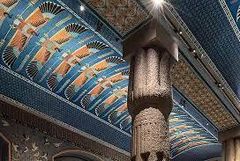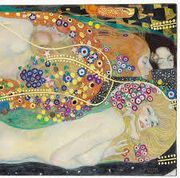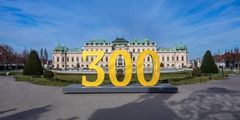May 2023
„TWENTY YEAR - ANNIVERSARY for our Ms SLAVICA!“
„TWENTY YEAR - ANNIVERSARY for our Ms SLAVICA!“

TWENTY years of "SERVICE & LOYALTY" - this is a VERY SPECIAL personal ACHIEVEMENT!
Ms Slavica first worked at Lake Aachensee in Tyrol before heeding the call to come to Vienna. "Love" was stronger and so she ended up at Hotel AUSTRIA!
The third floor has since been "HER floor"! She sees everything, cares for everything and our guests feel ESPECIALLY well looked after on the third floor!
We duly celebrated her achievement by all sharing a glass of sparkling wine and a meal!
"THANK YOU" Ms Slavica for your VERY SPECIAL LOYALTY!
„Current and upcoming EVENTS in Vienna in May 2023“
Interested in music, theater, the opera, museums, and exhibitions?
We’ll be happy to keep you informed about all the dates / schedules and perhaps even let you in on a few secrets too…

Kunsthistorisches Museum: Traces of the World´s Fair

What has ancient Egypt got to do with the 1873 Vienna World's Fair? Find out in a pretty impressive way at the Kunsthistorisches Museum Vienna.
Travel back in time to ancient Egypt and follow in the footsteps of the 1873 World's Fair - both at the same time. This is possible at the Egyptian and Near Eastern Collection of the Kunsthistorischen Museum Wien (KHM). How, you may wonder? In the 1840s, the magnificent tomb of nomarch Chnum-hotep II (around 1870 BC) was discovered in Middle Egypt.
In the form of an enlarged replica, the tomb was then displayed as part of the 1873 Vienna World´s Fair. Particularly the imposing reproductions of the wall and ceiling paintings were considered fascinating. Visitors of the World´s Fair became acquainted with something
Years later, in 1891, when the Kunsthistorisches Museum Vienna was opened, it was obvious to use these wall and ceiling paintings to decorate the Egyptian and Near Eastern Collection.
For 130 years now, the collection has been captivating visitors with its unique features. In addition to three original Egyptian monolithic columns, which are over six meters high, it also includes the reproductions of the wall paintings from the nomarch´s tomb.
But time has left its mark, the wall tapestries and ceiling paintings were in poor condition, which is why they were comprehensively restored and subjected to scientific examination for the first time, in 2021. Today, they are considered a fantastic sight again and, of course, a perfect example of the far-reaching traces left in Vienna of the 1873 World's Fair.
http://www.khm.at/
Belvedere: Who inspired Klimt?

A spectacular new exhibition project at the Lower Belvedere compares Gustav Klimt with his most important artistic contemporaries. "Klimt. Inspired by Van Gogh, Rodin, Matisse..." shows the master of Vienna Modernism in a whole new light.
The Belvedere celebrates the 300th anniversary of the construction of the Upper Belvedere in 2023, and with the exhibition "Klimt. Inspired by Van Gogh, Rodin, Matisse..." starting February 3, 2023, offers art fans a real premiere: Gustav Klimt (1862-1918) enters into a dialog with the most important artists of his time in a whole new way.
The exhibition is the result of a major research project with the Van Gogh Museum in Amsterdam, where it could previously be seen between October 2022 and January 2023. Waiting for you in the Belvedere are around 90 paintings, drawings, and sculptures by Gustav Klimt as well as the "Who's who" of Western European avant-garde art: Vincent van Gogh, Auguste Rodin, Henri Matisse, Claude Monet, Édouard Manet, Edvard Munch, Margaret Macdonald Mackintosh, Henri de Toulouse-Lautrec, Kees van Dongen, and many others.
Exciting comparisons reveal the influences to be found in Klimt's works. On view are many paintings from the holdings of the Belvedere, which houses the biggest collection of Klimt paintings in the world (24), as well as top-class loan pieces. Works were selected that have been shown to inspire the master of Vienna Modernism. This makes it easy to identify the overlaps and deviations.
Klimt himself was not actively involved in the creative processes in Paris and other western European centers of avant-garde art. Rather, he and his fellow travelers Otto Wagner, Josef Hoffmann, Koloman Moser, and others saw to it that Vienna around 1900 blossomed all by itself. However, he evidently found pleasure in other artists and grappled with various works – in exhibitions and collections in Vienna, during his many foreign trips or through reproductions in publications.
A long period of preparation precedes the exhibition. The topic has been undergoing meticulously preparation in a joint research project between the Belvedere and the Van Gogh Museum in Amsterdam since 2015. They managed to reconstruct which of his colleagues' works Klimt could actually have known. Large exhibition venues like the Secession were investigated, as were less-known institutions, private collections, and periodicals like "Ver Sacrum".
Today we know that Klimt's style was constantly changed and developed by diverse influences. The exhibition shows the master of Vienna Modernism in a whole new light. Because the comparison with artistic colleagues facilitates an exciting discourse. A real blockbuster!
300 Jahre Belvedere

A major special exhibition presents the moving history of this extraordinary institution. In 2023, the anniversary of the Upper Belvedere's completion will be celebrated together with many other program highlights.
The 10 years it took to build the Upper Belvedere, which initially served as a summer residence for the famous military commander Prince Eugene of Savoy, came to an end in 1723. The unique, Baroque Belvedere palace complex was thus complete.
The institution is taking the opportunity of this major anniversary in 2023 to look back over its own history. As a museum it has developed down the years into one of the leading addresses for art. Maria Theresa once opened one the world's first publicly accessible museums in the Upper Belvedere (1777). However, the Baroque palace also became the setting for glittering parties and important events like the wedding reception of Marie Antoinette (1770) and, of course, the signing of the Austrian State Treaty (1955).
The major exhibition project "The Belvedere. 300 Years a Place of Art" can be seen in the Orangery from December 2022. It is a critical homage to the history of a place that has undergone constant change through the centuries. The exhibition spans the years from 1723 to the present day. For 13 months, visitors can dive into the eventful history of the institution and its world-famous art collections covering 800 years from the Middle Ages to the present day.
The museum's holdings are used to show how different focal areas were in demand, depending on the epoch. Historical developments and institutional changes are traced. The exhibition also looks at how works were added to and removed from the collection. A famous example? The return of Gustav Klimt's "Goldene Adele" to inheritors in 2006.
The special exhibition is followed in 2023 by many other program highlights at all of the museum's locations – the two palaces of the Upper and Lower Belvedere as well as the contemporary art museum Belvedere 21. On at the Lower Belvedere from February to May is the long-prepared major exhibition project "Klimt. Inspired by Van Gogh, Rodin, Matisse...", which looks at the question: Who influenced the Viennese Art Nouveau genius Gustav Klimt?
Further highlights in 2023: Exhibitions on young ("On the New") and female art (retrospectives on Louise Bourgeois and Renate Bertlmann) as well as the sculpture project "Public Matters. Contemporary Art in the Belvedere Garden". Events, publications, workshops, ceremonies, and digital projects round off the program. From March, the show collection of the Upper Belvedere also shines in a new light.
In its anniversary year, however, the Belvedere wants not only to reflect on its past, but also to look to the future. That is also expressed in the motto of the festivities. The "Golden Spring" addresses two basic principles: Gold stands for tradition, the holy spring (ver sacrum) as a sign of awakening.
The Belvedere. 300 Years a Place of Art
Orangery, December 2, 2022 – January 7, 2024
Upper Belvedere (Oberes Belvedere)
http://www.belvedere.at
